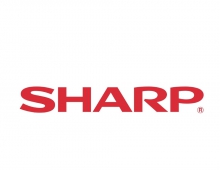
Sharp fabricates blue laser diodes using MBE
UK-based Sharp Laboratories of Europe has made the first blue-violet laser diodes to
be grown using MBE.
Scientists at Sharp Laboratories of Europe (SLE) have produced the world’s first
blue-violet laser diodes fabricated using MBE.
Jonathan Heffernan and colleagues at the UK-based subsidiary of the Japanese electronics giant reported their work in the latest issue of the journal Electronics Letters.
Grown on a sapphire substrate, the ridge waveguide InGaN multiple quantum well lasers operate at room temperature with an output wavelength of 400 nm.
To date, only low-power blue LEDs have been fabricated using MBE. The blue LEDs and lasers developed by Shuji Nakamura and colleagues at Nichia Chemical Industries in Japan in the mid-1990s were all fabricated using MOVPE and this technique has dominated since then.
SLE says that is has a patented MBE system that has been specifically designed for growing GaN devices.
One key advantage of the MBE method is its much lower consumption of source materials for device growth, in particular the amount of ammonia required as the source of nitrogen.
According to Heffernan and colleagues, another significant difference is that the MBE-grown devices require no post-growth thermal annealing to activate the p-type dopant, a process that is required for devices fabricated using MOVPE.
The SLE team is still some way short of producing commercial-grade devices, however. At the laser threshold current of 1.5 A, the operating voltage was 33 V. The threshold current density is approximately 30 kAcm-2.
The lasers currently operate in pulsed mode with a pulsewidth of 200 ns. For commercial applications, a continuous-wave device would be required.
Jonathan Heffernan and colleagues at the UK-based subsidiary of the Japanese electronics giant reported their work in the latest issue of the journal Electronics Letters.
Grown on a sapphire substrate, the ridge waveguide InGaN multiple quantum well lasers operate at room temperature with an output wavelength of 400 nm.
To date, only low-power blue LEDs have been fabricated using MBE. The blue LEDs and lasers developed by Shuji Nakamura and colleagues at Nichia Chemical Industries in Japan in the mid-1990s were all fabricated using MOVPE and this technique has dominated since then.
SLE says that is has a patented MBE system that has been specifically designed for growing GaN devices.
One key advantage of the MBE method is its much lower consumption of source materials for device growth, in particular the amount of ammonia required as the source of nitrogen.
According to Heffernan and colleagues, another significant difference is that the MBE-grown devices require no post-growth thermal annealing to activate the p-type dopant, a process that is required for devices fabricated using MOVPE.
The SLE team is still some way short of producing commercial-grade devices, however. At the laser threshold current of 1.5 A, the operating voltage was 33 V. The threshold current density is approximately 30 kAcm-2.
The lasers currently operate in pulsed mode with a pulsewidth of 200 ns. For commercial applications, a continuous-wave device would be required.





















